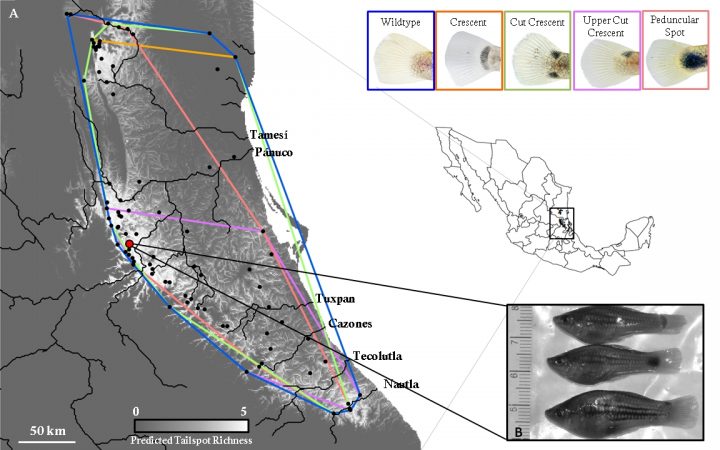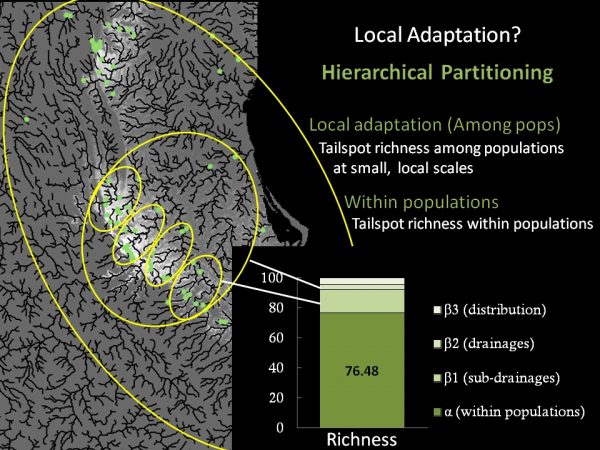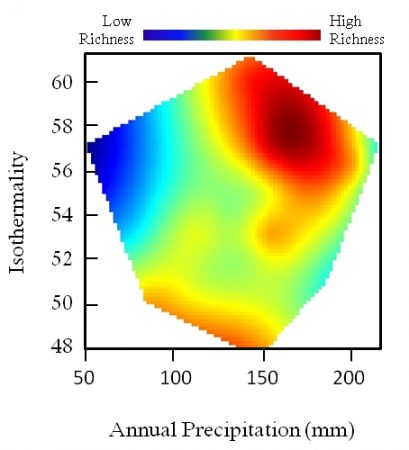While evolutionary biologists have learned a great deal about balancing selection, we still have much to learn about the functional mechanisms of balancing selection and the spatial extent to which balancing selection operates (e.g., does balancing selection on a given locus in one or a few populations necessitate balancing selection for that locus in all populations of a species?). Our previous work on X. variatus suggests that environmental heterogeneity plays an important role in generating fluctuating selection on the tailspot polymorphism, maintaining variation within populations. In this study we compiled data from our own field work, more than 30 populations from the University of Michigan Museum of Zoology, and the literature to examine the spatial extent of selection on the tailspot polymorphism.
Combining niche modeling, hierarchical partitioning, and model selection across more than 80 populations we found a signal of environmental heterogeneity on allelic richness (i.e., number of tailspot alleles in a population) with little evidence for migration or local adaptation. Culumber et al. in press, Evolution.


